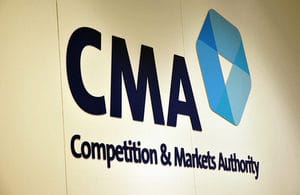
CMA: required regulators’ transparency plans by end of this month
Legal regulators have reacted cautiously to the Competition and Markets Authority’s (CMA) recommendations on price transparency, pledging to pilot regulatory requirements and test their effects on the lawyers and firms they regulate.
Responding to the CMA’s deadline for action plans on transparency to be published by today, the frontline regulators promised to implement controversial measures to encourage lawyers to publish prices if possible.
For example, the Solicitors Regulation Authority (SRA) is working on an “online quote generator template” for conveyancing with the Council for Licensed Conveyancers (CLC).
None of the frontline regulators resisted the CMA’s broad conclusions that consumers needed transparency to make informed decisions on ‘shopping around’ for legal services.
However, the SRA outspokenly stressed the limits of applying rules to law that were appropriate to goods and services elsewhere in the marketplace.
While agreeing that the legal services market was “not working” as well as it could, the SRA argued that “pricing alone does not present the whole picture of the service a firm offers… [and] there are challenges with increasing price transparency as legal services are not generally commoditised products”.
The plan published yesterday builds on the SRA’s statement in January that it was looking to introduce price transparency “carefully” for services such as divorce, wills or conveyancing.
The plan said that instead of creating a regulatory requirement on publishing prices, it would start by selecting “a small number of areas of law”, such as conveyancing, “in which to mandate price information being published on firms’ websites”.
The SRA said it would launch a formal consultation in September 2017 on information that would be collected and published on a digital register, as well as what firms would be required to publish.
Paul Philip, the SRA’s chief executive, said: “We want to make sure we strike a balance between making sure consumers have access to consistent, useful price information, while not over-burdening firms with over-restrictive rules.”
Both the SRA and the Bar Standards Board (BSB) claimed recently-announced regulatory changes supported the CMA’s objectives. The SRA pointed to its decision to allow solicitors to practise from unregulated law firms as providing “consumers with increased choice, enabling them to more easily access qualified, regulated solicitors at a cost they can afford”.
The BSB said its intention to encourage more chambers to seek and use feedback “to improve services to clients” would be part of its CMA action plan.
The BSB said it was “working closely with other regulators” and that its action plan on transparency would cover the referral Bar as well as barristers who were engaged directly by the public.
But it admitted that introducing a requirement to disclose fees and charges would represent a “culture shift for the profession”.
Research it carried out into 368 chambers found that 75% made no reference whatsoever to fees on their websites, while just 8% provided numbers on their fees/prices. Of those chambers that did give guidance on what they charged, most were in the areas of public access and/or family law.
The BSB said it would run pilots covering public access and family law practitioners in the autumn before consulting on rule changes in March 2018 and implementing them in December 2018.
CILEx Regulation pledged that it would develop a ‘transparency communications plan’. It said it believed its regulated firms should provide information on “price, service, redress and regulatory status” on their websites and social media.
It would develop “guidance” to help consumers by the end of 2018 or later.
Both the SRA and CILEx Regulation said they would develop logos to indicate a firm was regulated by them.
The SRA said two logos – or “digital kite marks” – would make it plain its regulated firms were first regulated and second that clients were eligible to claim on the SRA’s compensation fund if necessary. The former would be mandatory for use on firms’ websites and the latter voluntary.
The CLC said it would consult in the autumn over “detailed proposals for increasing transparency of price and service quality information for consumers”. It has been in discussions with representative body the Society of Licensed Conveyancers (SLC) on “innovative ways to meet the CMA’s expectations”.
However, in May the SLC chairman, Simon Law, objected to the CMA’s characterisation of conveyancing as “a commoditised market” upon which it was therefore, in his words, “relatively easy to implement changes to provide transparency on fees and quality of service”.
The Institute of Chartered Accountants in England and Wales (ICAEW), which earlier this week had its application for the right to handle litigation, advocacy and legal instruments in taxation work approved by the Legal Services Board, said it was collaborating with other regulators, for example on “price guidelines for probate”.
The CMA’s call for action on transparency followed publication of its final report in December. There the competition watchdog urged regulators to deliver a “step change in standards of transparency”, so that lawyers’ clients can both understand the price and service they will receive, and compare providers.
The CMA particularly sought consistency across the sector and urged that regulators worked together. Together they have formed the remedies programme implementation group to establish collaboration on the CMA’s agenda.
Collaboration includes work on the development of the Legal Choices website, which is intended to provide the public with information about which regulated and unregulated legal services are available.
The website has an objective of having two to three million users over three years.
All the regulators have also been collaborating on regulatory data sets that could be used to power comparisons between providers – for instance complaints data – although they have yet to reach agreement on a single digital register, with data published in a consistent format across the profession.












Leave a Comment